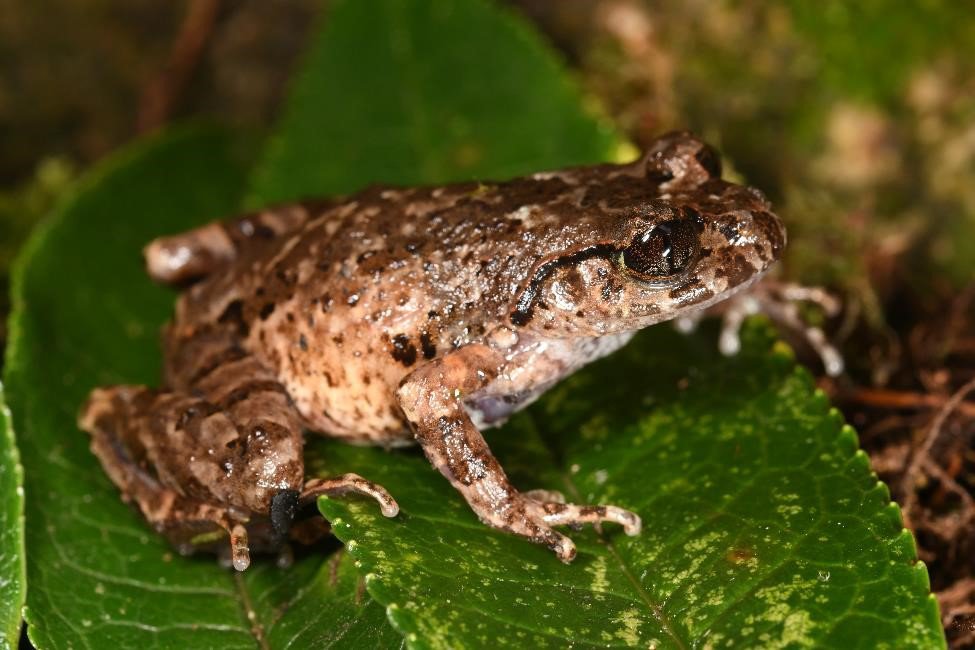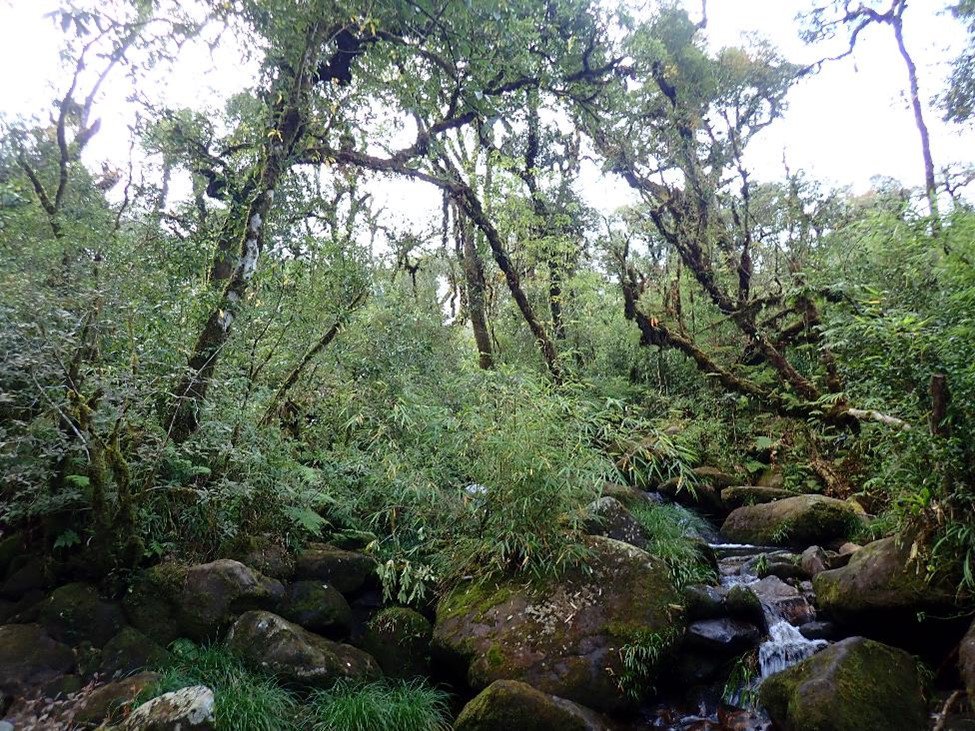Reaching new heights: A new species of frog found on the second highest mountain in Vietnam
A species new to science has been discovered by an international team of scientists, including Australian Museum Amphibian and Reptile curator, Dr Jodi Rowley. This new species of tiny frog, at only 2-3 cm in body length, can be found in the mountainous forest on Mount Pu Ta Leng, Vietnam.
A tiny species of frog living at over 2,300 metres elevation on Mount Pu Ta Leng in northwestern Vietnam has been discovered by an international team from Vietnam, the UK and Australia. This represents the twelfth new species of frog discovered in the Hoang Lien Range of northern Vietnam in the last 10 years, highlighting the area’s rich yet poorly known amphibian diversity.

A female of the new species, Mount Pu Ta Leng leaf-litter frog (Leptobrachella graminicola).
Image: Luan Thanh Nguyen© Luan Thanh Nguyen
Mount Pu Ta Leng is the second highest mountain in Vietnam, reaching a height of 3,049 m. It is not an easy place for scientists to conduct surveys, due to its high elevation, steepness, low temperatures and high humidity all year round. However, in 2019 a small team of biologists led by Luan Thanh Nguyen, braved the conditions search for the Critically Endangered Botsford’s Leaf-litter Frog (Leptobrachella botsfordi). Instead of finding this rare species on Mount Pu Ta Leng, we found a population of another species of Leptobrachella. After carefully checking their appearance and DNA, we confirmed that this frog species was previously unknown to science and have named it as a new species – the Mount Pu Ta Leng Leaf-litter Frog (Leptobrachella graminicola).
The common name of the species, the Mount Pu Ta Leng Leaf-litter Frog, refers to its mountainous home, while its scientific name, Leptobrachella graminicola, refers to one of the interesting behaviours of the new species. The Latin term, gramineus translates to grass-like and incola means inhabitant – so graminicola means living in grass-like microhabitats. A fitting name, as all the frogs we studied were found on grass-like vegetation along streams at night.

The habitat where the new species was found on Mount Pu Ta Leng.
Image: Luan Thanh Nguyen© Luan Thanh Nguyen

All individuals of the new species were found on leaf of grass-like alongside stream.
Image: Luan Thanh Nguyen© Luan Thanh Nguyen
The Mount Pu Ta Leng Leaf-litter Frog is small, at only 2-3 cm in body length. It is only known from forests at 2,300 m elevation in Lao Cai and Lai Chau provinces, Vietnam. Due to its mountain-top habitat, it is likely to be restricted to a very small area and is potentially threatened by habitat loss and tourists’ activities. Although the mountain is within a Natural Reserve, a tourist trek has been created by local people which leads to the top of the mountain. Numerous camps have been built along the trekking route without the permission from the local authorities. Despite conducting two surveys in search of frogs by our team on this mountain, we still don’t know much about this species, including its tadpole, ecology, and breeding behaviour. Further studies are essential in furthering our understanding of this species.

A tourist camp built without official permission at the type locality of the new species.
Image: Luan Thanh Nguyen© Luan Thanh Nguyen
Since 2015, our team has been working amphibian conservation in the Hoang Lien Range, with a focus on the conservation of two Critically Endangered species, Botsford’s leaf-litter frog (Leptobrachella botsfordi) and Sterling's toothed toad (Oreolalax sterlingae). This long-term conservation project also facilitates the research and enhanced understanding of other amphibian species within their range. In addition to our achievements on the conservation of the two target species, we have achieved some significant findings, such as the discovery of new species. This year we welcome the official scientific recognition of Mount Pu Ta Leng leaf-litter frog.
The discovery of this tiny new frog species is the fifth new frog species discovered by our team in the Hoang Lien Range since our collaboration "Amphibian conservation on the roof of Indochina" started in 2015. It also highlights the unique and imperilled biodiversity of the Hoang Lien Range – known to be home to more than 85 species of amphibians, many of which are threatened with extinction.

A view of Mount Pu Ta Leng from 2300 m elevation.
Image: Luan Thanh Nguyen© Luan Thanh Nguyen
Luan Thanh Nguyen, Botsford’s leaf-litter frog EDGE Fellow, Asian Turtle Program of Indo-Myanmar Conservation.
Benjamin Tapley, Curator of Reptiles and Amphibians, Zoological Society of London.
Dr Jodi Rowley, Curator of Amphibian & Reptile Conservation Biology at the Australian Museum and UNSW.
Acknowledgements
This work is the result of a collaboration between the Zoological Society of London, the Australian Museum, Indo-Myanmar Conservation, and Hoang Lien National Park.
We are extremely grateful to the board and staff of Hoang Lien National Park and Bat Xat Nature Reserve for their kindly facilitated surveys and issued permissions. This work was supported by Ocean Park Conservation Foundation Hong Kong under grant number AM01.1718 and an EDGE of Existence Fellowship by the Zoological Society of London.
More information:
Nguyen, L.T., Tapley, B., Nguyen, C.T., Luong, H.V. & Rowley, J.J.L. (2021) A new species of Leptobrachella (Anura, Megophryidae) from Mount Pu Ta Leng, northwest Vietnam. Zootaxa 5016, 301–332. https://doi.org/10.11646/ZOOTAXA.5016.3.1

